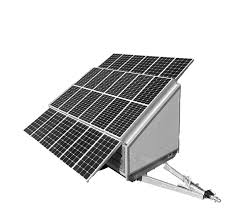
Harnessing the Power of Clean Energy for a Sustainable Future
Clean energy has emerged as a cornerstone of sustainable development, offering a promising solution to the pressing challenges of climate change, environmental degradation, and energy security. Unlike conventional fossil fuels, which contribute to air and water pollution, as well as greenhouse gas emissions, clean energy sources such as solar, wind, hydro, geothermal, and biomass power offer renewable, environmentally friendly alternatives. The adoption of clean energy technologies not only mitigates the adverse effects of traditional energy production but also catalyzes economic growth, enhances energy independence, and fosters a healthier planet for future generations.
Solar energy, derived from the sun’s radiation, is one of the fastest-growing sources of clean power worldwide. Solar photovoltaic (PV) panels, installed on rooftops, solar farms, and even in space, convert sunlight into electricity without emitting greenhouse gases or consuming water. The declining cost of solar panels, coupled with technological advancements and supportive policies, has made solar energy increasingly competitive with fossil fuels in many regions. Additionally, solar power offers energy access to remote and underserved communities, empowering them with sustainable electricity solutions.
Wind energy is another pivotal component of the clean energy (Clean energie) transition. Wind turbines harness the kinetic energy of the wind to generate electricity, providing a scalable and environmentally benign alternative to traditional power generation methods. Onshore and offshore wind farms have proliferated across the globe, capitalizing on the vast wind resources available in various regions. Moreover, the integration of energy storage solutions and smart grid technologies enhances the reliability and stability of wind power, facilitating its seamless integration into existing energy systems.
Hydropower, generated from the gravitational force of flowing water, has long been a cornerstone of renewable energy production. Through the construction of dams and hydroelectric plants, rivers and streams are harnessed to generate electricity, with minimal greenhouse gas emissions and environmental impact. While large-scale hydroelectric projects have faced scrutiny due to concerns about ecosystem disruption and displacement of communities, small-scale and low-impact hydropower installations offer sustainable energy solutions that respect local ecosystems and communities.
Geothermal energy, derived from the Earth’s heat stored beneath the surface, represents a reliable and continuous source of clean power. Geothermal power plants utilize steam or hot water from geothermal reservoirs to drive turbines and generate electricity. With abundant geothermal resources present in volcanic regions and tectonic plate boundaries, geothermal energy has significant potential to meet both baseload and peak electricity demand. Furthermore, direct use applications, such as heating and cooling systems, leverage geothermal energy for residential, commercial, and industrial purposes, reducing reliance on fossil fuels and lowering greenhouse gas emissions.
Biomass energy, derived from organic materials such as wood, crop residues, and organic waste, offers a versatile and renewable energy source. Through processes such as combustion, gasification, and anaerobic digestion, biomass can be converted into heat, electricity, and biofuels, displacing fossil fuels and reducing emissions of carbon dioxide and other pollutants. Moreover, biomass energy production supports sustainable land management practices, promotes rural development, and mitigates waste disposal challenges, contributing to a circular economy and environmental stewardship.
In conclusion, clean energy stands as a beacon of hope in the transition towards a sustainable future. By harnessing the power of solar, wind, hydro, geothermal, and biomass resources, we can reduce carbon emissions, mitigate climate change, and safeguard the health of our planet and communities. Embracing clean energy is not only an environmental imperative but also an economic opportunity and a moral obligation to future generations. Through concerted efforts and collective action, we can realize the full potential of clean energy and pave the way towards a cleaner, greener, and more resilient world.